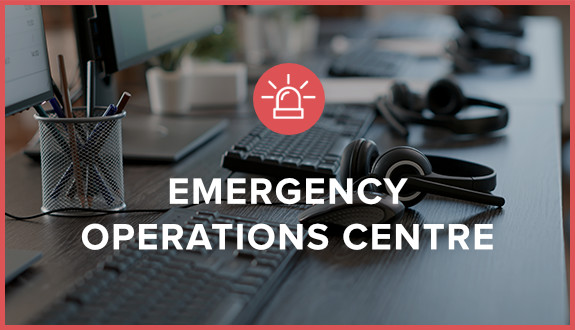
It’s Emergency Preparedness Week! This year, Emergency Preparedness (EP) Week is May 5 to 11 and the theme for the Province of British Columbia is “Using technology before, during, and after emergencies.“
Technology in emergency preparedness
Technology is used in many ways to help mitigate, prepare for, respond to, and recover from emergencies.
First Nations’ Emergency Services Society (FNESS) uses technology in many different ways to help communities prepare for emergencies. One example is how we use OpsReady (Formerly known as Lightship) software as a decision support tool to help create structural defence plans (SDPs) for communities.
Complimenting our Lightship software, we recently announced our new drone program that will bring state-of-the-art mapping services to First Nation communities. We believe that together, our Lightship software and drone program will be critical support tools when developing community emergency preparedness plans.
The Province of British Columbia also uses many forms of technology to keep us prepared. Here are a few examples:
- Satellites that forecast weather
- Maps showing real-time wildfire information
- Infrastructure that prevents flooding
- Broadcast intrusive emergency alerts
be prepared with these tech tips
Being prepared for emergencies means you should know the hazards in your area, make a plan, and have supplies ready.
To support this year’s theme for EP Week, Prepared BC has three tech tips to help us prepare for emergencies.

#1: Know the hazards in your community
From earthquakes and tsunamis to wildfires and floods, hazards vary from region to region. Knowing the hazards that are most likely to happen in your community can help you focus your preparedness actions, navigate disruptions and get you back to regular activities sooner.
💡 Tech tip: Use the PreparedBC hazard map to see what emergencies could happen near you!

#2: Make your emergency plan
Emergencies can be stressful. An emergency plan says how you and the people you live with will respond during an emergency. Having a home emergency plan will help you stay calm, connected, focused, and safe during an emergency.
💡 Tech tip: Stay tuned for an exciting way you’ll be able to use technology to enhance your home emergency planning! In the meantime, check out the fill-in-the-blanks Home Emergency Plan that you can download and print off at home or contact your First Nation or local government office to get a copy.

#3: Build your emergency kit and grab-and-go bags
After an emergency, you may need to:
- Stay at home with an emergency kit or
- Leave immediately with a grab-and-go bag
Check out Prepared BC’s basic supply list. Add items based on your specific needs, and don’t forget to include stuff for your pets.
💡 Tech tip: Sometimes the best technology is the kind that has been around for a while, like pens, paper, and batteries. Be sure to include these in your kit and bags!
Get involved with emergency preparedness week 2024
Register for Prepared BC’s webinar
Join the 45-minute webinar on May 9 at 5:30 PM to learn how to prepare for emergencies, as well as some of the ways you can use technology to help.
All participants will be entered to win a 4-person emergency kit! Deadline to register for the webinar on Zoom is May 8 at 11:59 PM.
Join the Canada-wide challenge
The Government of Canada is hosting a social media challenge to win an emergency kit.
HOW TO ENTER
Tell them how you’re helping to make you and your family better prepared to cope during and emergency, and use the hashtags #EPWeek2024 or #ReadyforAnything.
It can be as simple as making an emergency kit with items found around your home, creating a family emergency plan, or becoming more informed about the hazards in your area. Get creative and post those messages, photos, or videos.
And don’t forget to use the hashtags mentioned above to enter!
More info on rules and regulations are available.






![24 Jonas Joe (5P63)[67] copy profile photo of Jonas Joe](https://www.fness.bc.ca/wp-content/uploads/2024/11/24-Jonas-Joe-5P6367-copy-scaled.jpeg)

